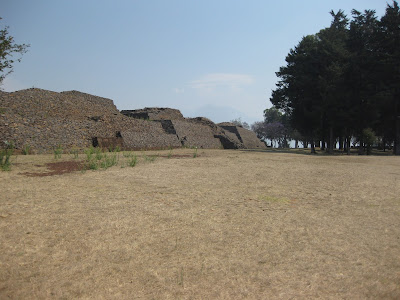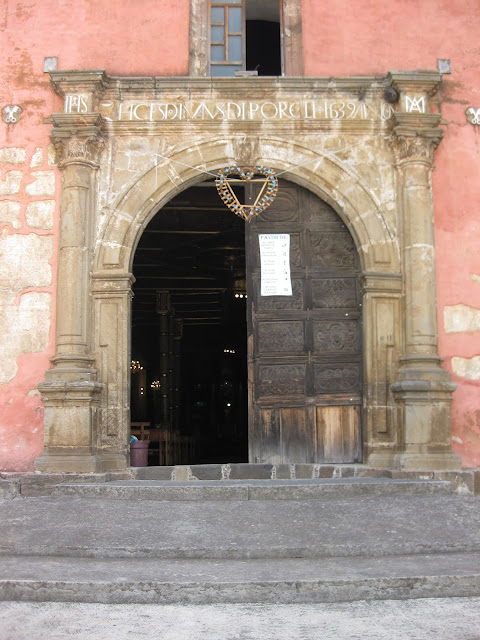My parent-in-laws were members of the Religious Society of Friends, known to most of us as Quakers. Their meeting house at Jordans is described in Simon Jenkins’ England’s Thousand Best Churches as the Quaker Westminster Abbey. Quakers believe in simplicity, so Jordans did not have any of the studied grandeur of the great Abbey, but its very simplicity is beautiful and speaks of the values of those who built it in 1688. This was one of the first meeting houses built after James II’s Declaration of Indulgence of 1687 allowed non-conformists to worship lawfully. William Penn (of Pennsylvania fame) is buried here alongside his two wives and nine children, as are a number of others significant in Quaker history.
 |
| Jordans Meeting House, Jordans, Buckinghamshire |
Friends had met at Jordans for more than three centuries until, in 2005, fire destroyed the oak-beamed roof, but the interior and most of the leaded windows survived. Jordans is a listed building, so the manner of its retoration after the fire was managed by English Heritage, a process that took a number of years. Fortunately, only the most expert visitor would now detect any sign that the meeting house had been severely damaged.
I hope that the same will be said of one of the great glories of Mexican art and architecture, the church of Santiago el Apóstol (St James the Apostle) in Nurio, a town set in the splendid landscape of the Meseta Tarasca (Tarascan Plateau), home to many of the Purhépecha people, descendants of the Tarascans who ruled a 15th/16th century empire whose capital, Tzintzuntzan, in Michoacán, stood above the shores of Lake Pátzcuaro.
The evangelization of Michoacán in the first years of Spanish colonial rule was led by Bishop Vasco de Quiroga. Quiroga’s Franciscan friars tended not only to the spiritual health of the Indigenous people of Michoacán, but also, to some degree at least, to their medical health. Where they compelled the Purhépecha to build churches they also built hospitals (huataperas), adjacent to the house of God. One of the most splendid of these is the church of Nurio, and its huatapera.
Lake Pátzcuaro from Tzintzuntzan
 |
| Yácatas (temple platforms) at Tzintzuntzan |
The World Monuments Fund, which had financed restoration of the church in 2000-2004 Describes the church thus:
“Construction of the Apostle Santiago Church was initiated in the 16th century in the Michoacán Sierra to form part of a huatápera, or hospital complex. The complex was built by the Spanish Renaissance humanist and bishop of Michoacán, Vasco de Quiroga, who was sent to the New World by the Spanish Crown to investigate accusations of improper conduct being leveled against the conquistadors. The church’s interior boasts elaborate decorations from the 17th and 18th centuries in the Mexican Baroque style, which combined mudéjar carpentry and paintings done in the maque technique, a pre-Hispanic painting method that incorporates natural oils and minerals. The painted, exposed wood structure, including the coffered ceiling, was subject to insect infestation, fungal attack and exposure to moisture, leaving the interior finishes with iconographic paintings and decorative paint on the architectural elements in poor condition.
Between 2000 and 2004 WMF, through the Robert W. Wilson Challenge to Conserve Our Heritage, supported the restoration of the polychrome wood ceilings, mural paintings, portals, and ornate altarpieces. The project specifically focused on the consolidation and repair of wooden architectural features and the stabilization and conservation of decorative paint.
The church’s elaborate decorations represent a variety of both native and European styles, techniques, and materials. The establishment of the settlement, which was inspired by Thomas Moore’s Utopia, represents an important point in colonial history, as humanist efforts such as Quiroga’s recognized the rights of the indigenous people.”
The temple of the huatapera of Nurio
Jan and I visited Nurio briefly in 2018 with a group of demographic historians attending a conference at the Colegio de Michoacán, in Zamora, some 54km distant. The great glories of the church are (or rather were) its retablo (altar screen) and sotocoro, a vaulted wooden ceiling beneath the choir under which worshippers passed as they came to mass. Alas, on Sunday 7 March fire ravaged the church, leaving only four charred walls standing.
 |
| The 7 March 2021 fire and its aftermath |
A report of the fire in the English-language edition of El País noted that criminal violence in Michoacán has deterred most tourists from visiting Nurio and its church in recent years, adding “Visitors who had the luck to visit over the years have only their memories to comfort them today.” While Jan and I are profoundly saddened by the news of the fire, we are fortunate to have just such memories. We also have some (not very expert) photos, which I am sharing here.
 |
| The façade of Santiago Apóstol |
 |
| Decoration of the sotocoro |
 | |||
| The altar, Santiago Apóstol | |
 |
| The altar, Santiago Apóstol |





There seem more Sistine contenders than I thought in the Americas! Have you visited San Pedro Apóstol de Andahuaylillas Church in Peru (described - more deservedly than I'd thought from the advance publicity before we did - as the Sistine Chapel of the Andes).
ReplyDeleteI was not aware of this church, which from what I can see on the internet is certainly an architectural and artistic jewel. Like the Nurio church the Andahuaylillas church has been restored by the World Monuments Fund, which describes the church as follows:
ReplyDelete"
Who We Are
What We Do
Get Involved
Give
Completed Project
San Pedro Apóstol de Andahuaylillas Church
© Mapbox © OpenStreetMap Improve this map
The Sistine Chapel of the Andes
San Pedro Apóstol was built by Jesuits in the sixteenth century over a pre-Columbian huaca, or ceremonial space. The construction of the current temple started in 1570 with the creation of a small chapel corresponding to the existing apse and sanctuary; the nave and façade were completed in 1606. Much of the interior was decorated by Luis de Riaño, a student of Angelino Medoro, in the 1620s. It is often called the "Sistine Chapel of the Andes" because of the beauty of its mural paintings. The sanctuary has a polychrome ceiling in the Mudéjar style built using a pre-Hispanic construction method called kur-kur, which combines cane, straw, and mud instead of wood. Andahuaylillas is a small town located 25 miles (41 kilometers) from the city of Cusco, at 10,000 feet (3,100 meters) above sea level. Its 6,000 inhabitants are mainly involved in agriculture and cattle-raising, although in the past few years the town has seen an increase in tourism and the migration of its young to larger cities looking for job opportunities. The function of San Pedro Apóstol is mainly religious, although the parish also supports social programs and economic development initiatives."
The two churches have in common the use of Indigenous techniques to express religious concepts imported from Europe.